39 goto and labels in c
Goto statement and labels in C - C Programming Simple Steps The goto statement in C The goto statement moves the execution of the program to another statement. The transfer of the control is unconditional and one-way. Syntax and rules The label : Must be defined within a function Each label in one function must have a unique name. It cannot be a reserved C word. goto and Labeled Statements (C) | Microsoft Learn Syntax. A statement label is meaningful only to a goto statement; in any other context, a labeled statement is executed without regard to the label. A jump-statement must reside in the same function and can appear before only one statement in the same function. The set of identifier names following a goto has its own name space so the names do ...
What Is Goto And Label In C++? | Knologist Goto is a feature in C++ that allows a program to jump to a certain location in a text or file, without having to go through the full path. How Do You Use Labels In C Programming? In C programming, you use labels to control the behavior of your code. Labels are used to identify specific areas of code that need to be executed in order for the ...

Goto and labels in c
Local Labels in C - GeeksforGeeks Everybody who has programmed in C programming language must be aware about "goto" and "labels" used in C to jump within a C function. GCC provides an extension to C called "local labels". Conventional Labels vs Local Labels Conventional labels in C have function scope. Where as local label can be scoped to a inner nested block. Discover Goto and Labels in C++ - Learn C++ Discover Goto and Labels in C++ By Yilmaz Yoru April 14, 2021 The goto statement is used to jump to a label that provides an unconditional jump from the goto to a labeled statement in the same function. We can also do the same loops as the same in for () while () loops by using goto statement. goto statement in C - tutorialspoint.com A goto statement in C programming provides an unconditional jump from the 'goto' to a labeled statement in the same function. NOTE − Use of goto statement is highly discouraged in any programming language because it makes difficult to trace the control flow of a program, making the program hard to understand and hard to modify.
Goto and labels in c. Goto in c | labels in c - bigOschools goto and labels in c. The goto statement used as for jumping from or breaking out of two or more loops at once and transfer control to the other part of the program where it is being labeled. It is different from break statement as break statement teminates the innermost loop where as it jumps from innermost loop to labeled name. C# goto (With Examples) - Programiz Here, label is an identifier. When goto label; is encountered, the control of the program is transferred to label:. Then the code below label: is executed. Working of goto in C#. Example: C# goto using System; namespace CSharpGoto { class Program { public static void Main(string[] args) { Goto and Labels in C - TutorialAndExample A Label in C is used with goto and switch statements. A label is followed by a colon and what makes it special is that it has the same form as a variable name. Also,it can be adjoined with any statement in the same function as the goto. The label differs from the other statements of its kind is the scope. C goto Statement - W3schools goto label; A label is an identifier required for goto statement to a place where the branch is to be made. A label is a valid variable name which is followed by a colon and is put immediately before the statement where the control needs to be jumped/transferred unconditionally. Syntax:
GOTO (Transact-SQL) - SQL Server | Microsoft Learn Labels must follow the rules for identifiers. A label can be used as a commenting method whether GOTO is used. Remarks. GOTO can exist within conditional control-of-flow statements, statement blocks, or procedures, but it cannot go to a label outside the batch. GOTO branching can go to a label defined before or after GOTO. Permissions goto - Arduino Reference The use of goto is discouraged in C programming, and some authors of C programming books claim that the goto statement is never necessary, but used judiciously, it can simplify certain programs. The reason that many programmers frown upon the use of goto is that with the unrestrained use of goto statements, it is easy to create a program with undefined program flow, which can never be debugged. goto and labels in C - Java samples C provides the infinitely-abusable goto statement, and labels to branch to. Formally, the goto statement is never necessary, and in practice it is almost always easy to write code without it.. Nevertheless, there are a few situations where gotos may find a place.The most common is to abandon processing in some deeply nested structure, such as breaking out of two or more loops at once. C goto Statement - Programiz Should you use goto? If you think the use of goto statement simplifies your program, you can use it. That being said, goto is rarely useful and you can create any C program without using goto altogether. Here's a quote from Bjarne Stroustrup, creator of C++, "The fact that 'goto' can do anything is exactly why we don't use it."
c - How do multiple goto labels work - Stack Overflow It is not code, the label itself is not executed. The goto statement "jumps" to the statement labelled (prefixed) with the label that is present in the goto statement. The code continues to run from there and the execution follows all the rules as before (regarding if/else branches, loops, return, all the stuff). goto statement in C/C++ - GeeksforGeeks label: | goto label; In the above syntax, the first line tells the compiler to go to or jump to the statement marked as a label. Here label is a user-defined identifier which indicates the target statement. The statement immediately followed after 'label:' is the destination statement. The 'label:' can also appear before the 'goto ... c++ - How to store goto labels in an array and then jump to them ... In plain standard C, this not possible as far as I know. There is however an extension in the GCC compiler, documented here, that makes this possible. The extension introduces the new operator &&, to take the address of a label, which can then be used with the goto statement. Share Improve this answer answered Jun 2, 2009 at 8:41 unwind C++ goto statement - tutorialspoint.com A goto statement provides an unconditional jump from the goto to a labeled statement in the same function. NOTE − Use of goto statement is highly discouraged because it makes difficult to trace the control flow of a program, making the program hard to understand and hard to modify.
goto statement in C - tutorialspoint.com A goto statement in C programming provides an unconditional jump from the 'goto' to a labeled statement in the same function. NOTE − Use of goto statement is highly discouraged in any programming language because it makes difficult to trace the control flow of a program, making the program hard to understand and hard to modify.
Discover Goto and Labels in C++ - Learn C++ Discover Goto and Labels in C++ By Yilmaz Yoru April 14, 2021 The goto statement is used to jump to a label that provides an unconditional jump from the goto to a labeled statement in the same function. We can also do the same loops as the same in for () while () loops by using goto statement.
Local Labels in C - GeeksforGeeks Everybody who has programmed in C programming language must be aware about "goto" and "labels" used in C to jump within a C function. GCC provides an extension to C called "local labels". Conventional Labels vs Local Labels Conventional labels in C have function scope. Where as local label can be scoped to a inner nested block.



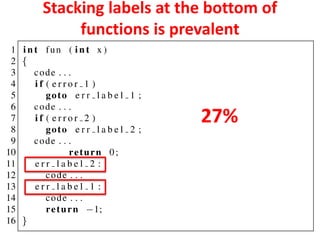
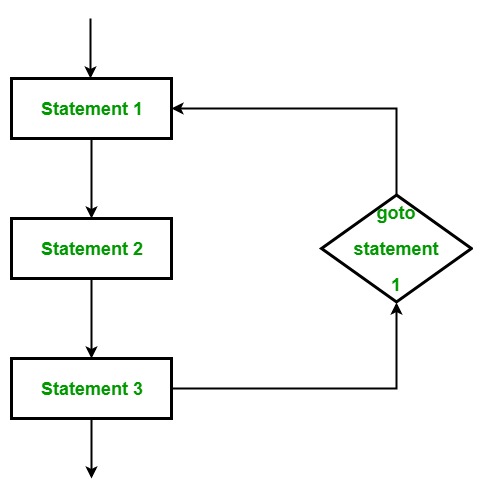

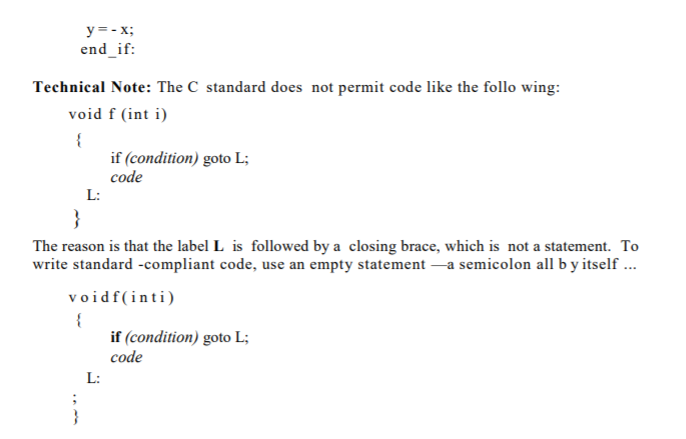


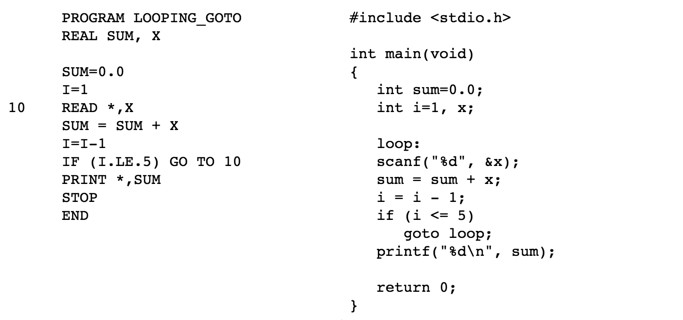
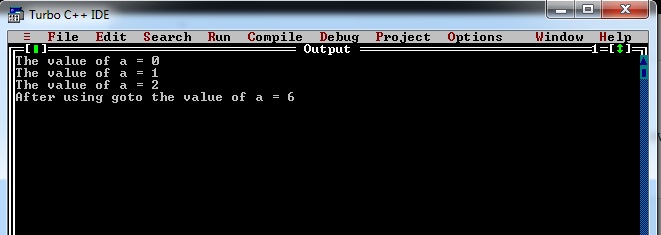


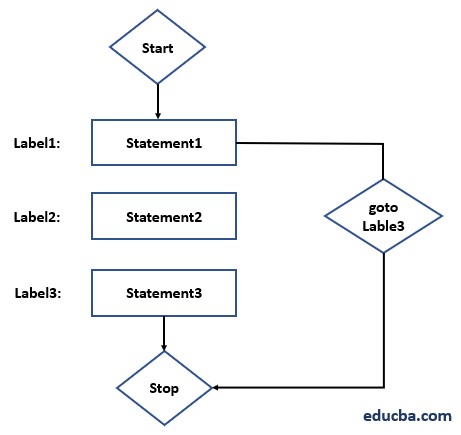
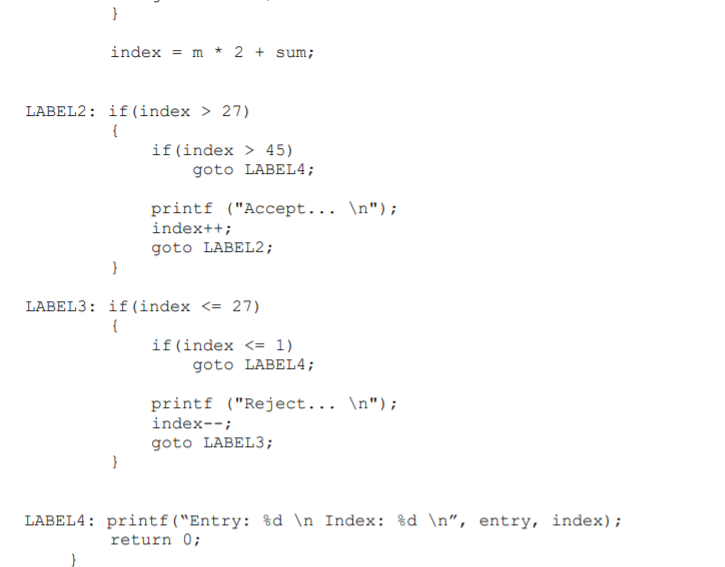
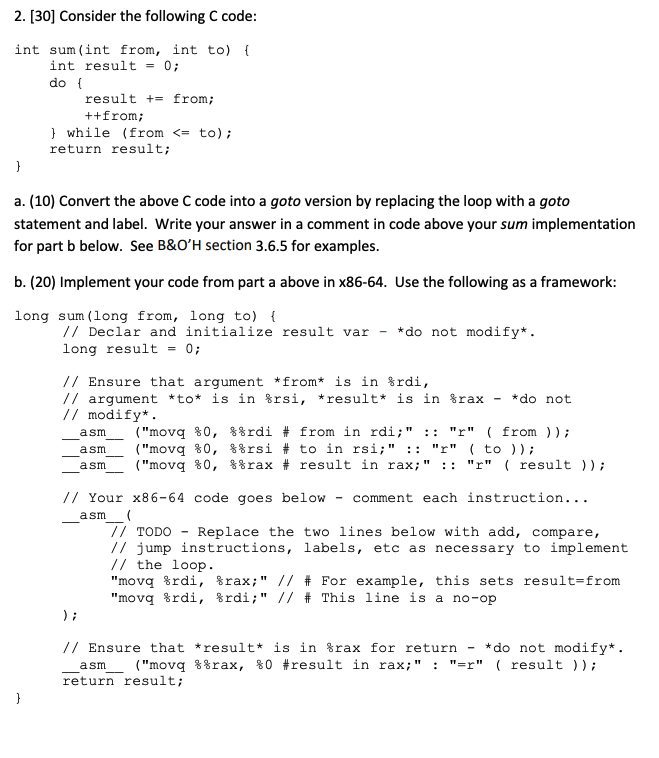

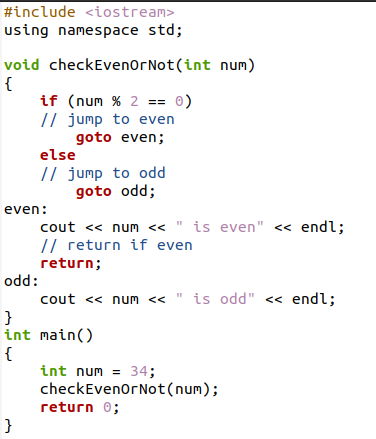
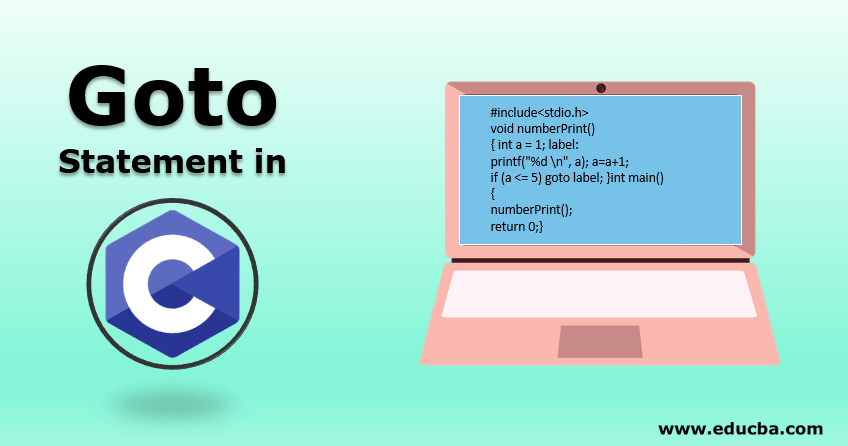


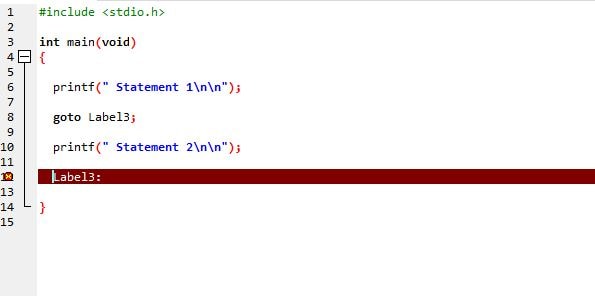
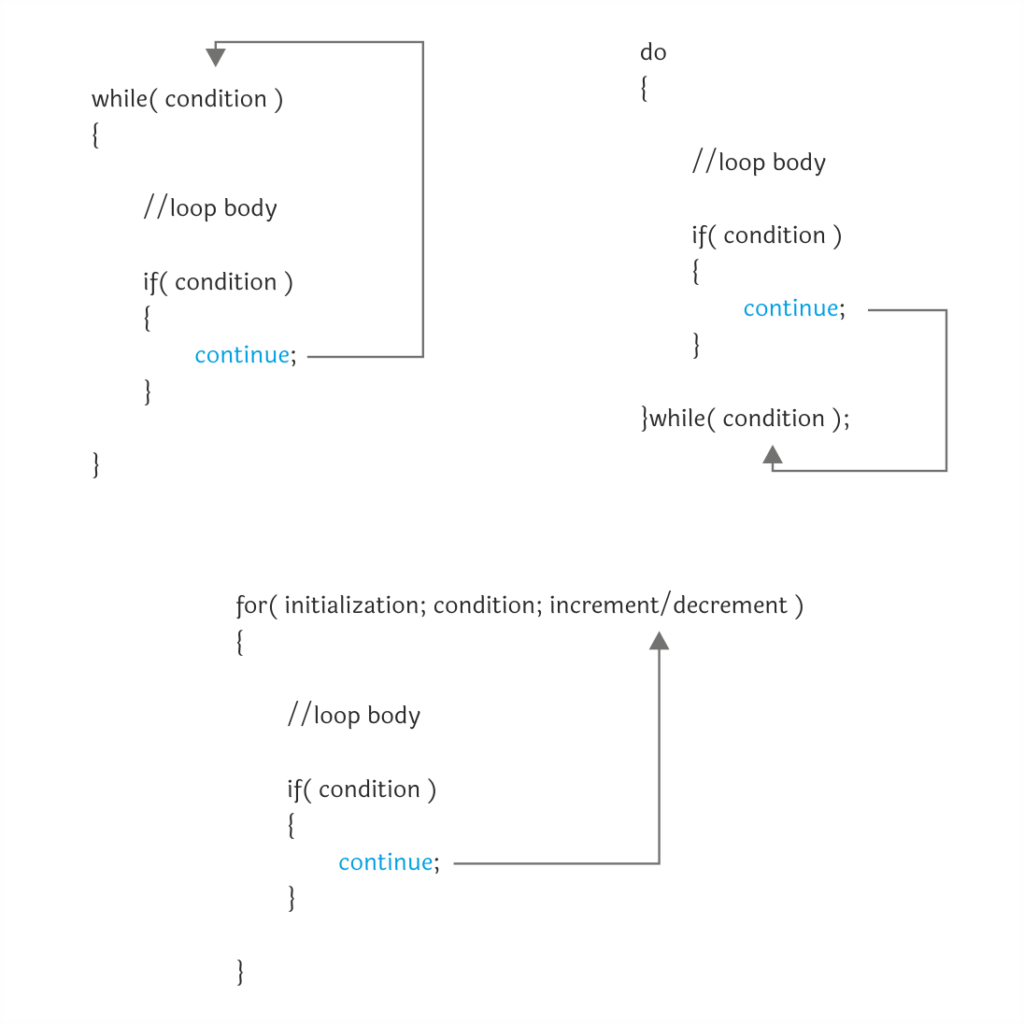

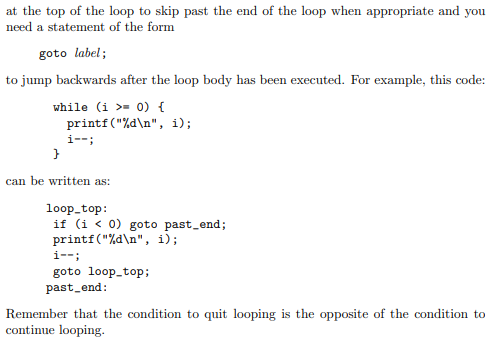


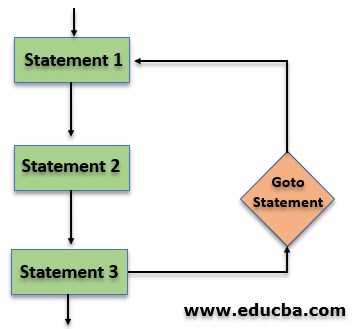

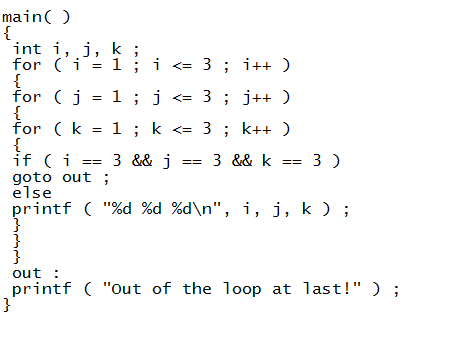


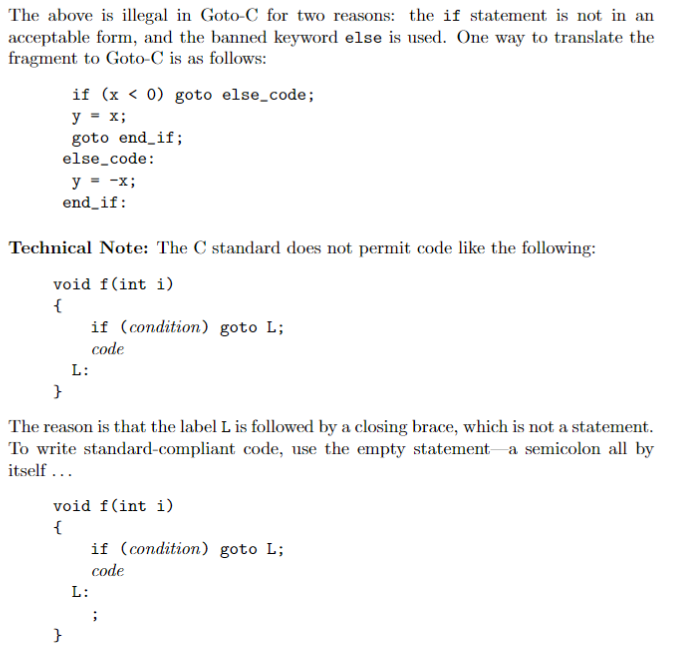

Post a Comment for "39 goto and labels in c"